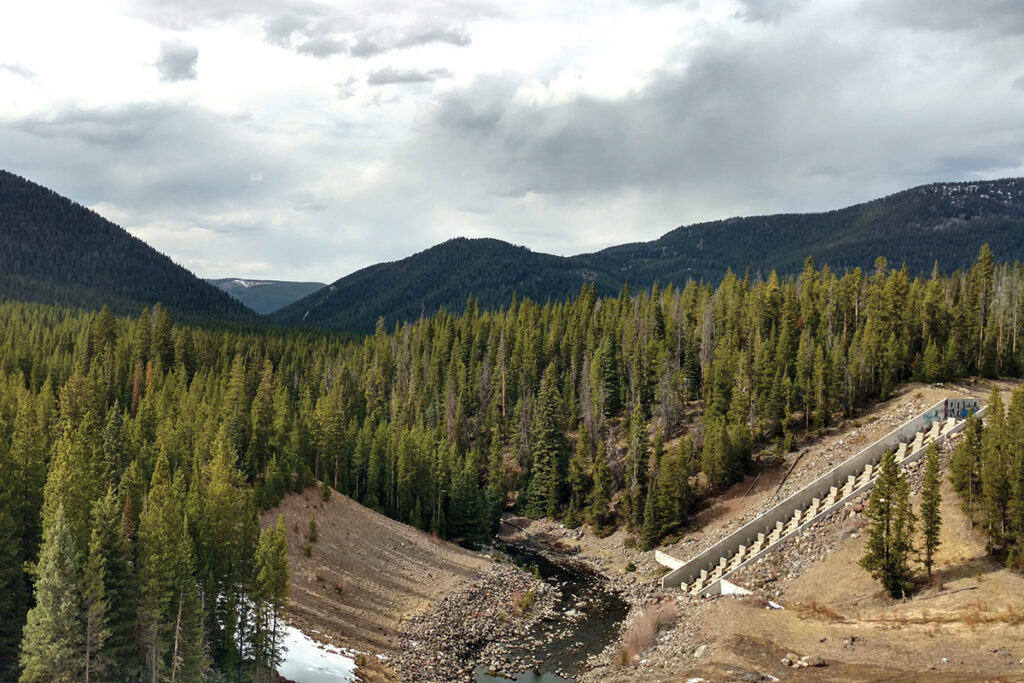This article was originally published by the Frontier Insitute.
More than 80 million acres of federal Forest Service land need to be treated with mechanical thinning, prescribed fire, replanting, and erosion control techniques to help reduce wildfire damage while promoting healthier forests. Recognizing the need to improve forest restoration, Congress appropriated roughly $1.5 billion in the recent infrastructure legislation for forest treatments. But there is a long road from appropriating money to on-the-ground restoration, especially if litigation over forest projects is not addressed.
Tanglesome litigation can encourage conflict rather than collaboration when it comes to forest projects. The United States must untangle the complicated web of litigation over federal forest management activities to ensure the Forest Service and partners can conduct restoration work and reduce wildfire risk.
While litigation plays an important role in holding the government accountable to the people, research from PERC’s report Fix America’s Forests found it can also be disruptive and warp incentives in the forest management context. It can elevate relatively minor scientific or policy disagreements over broader considerations of forest health and the public interest. One group, for example, can sue to raise a mere technicality to hold up a widely supported forest project.
Litigation has tied the Forest Service in what former chief Jack Ward Thomas described as a “Gordian knot” by limiting the agency’s ability to actively manage national forests. Forest restoration projects are substantially more likely to be litigated than other Forest Service projects.
Compared to other states across the country, Montana and states within the Ninth Circuit Court of Appeals are most negatively affected by litigation over forest projects. Since 2005, 85% of cases were filed in courts within the Ninth Circuit. Between 2003 and 2019, Forest Service Region 1–made up of Montana, northern Idaho, and North Dakota–had 54 forest restoration projects litigated. In comparison, Region 4–southern Idaho, Nevada, Utah, and western Wyoming–only had eight.
The mere risk of litigation can affect project analysis, costs, and delays. The Forest Service is risk-averse, conducting longer (and more expensive) project environmental reviews in an attempt to avoid the negative attention that comes with lawsuits. Often, forest projects are sued over claims from outside groups that environmental protections or processes were not adequately addressed, so the agency tries to “litigation proof” forest project reviews under the National Environmental Policy Act (NEPA) and the Endangered Species Act.
The good news is Montanans recognize the need for litigation reform so we can get more work done in our forests. Sen. Steve Daines championed an amendment to the infrastructure bill that says courts can only halt forest restoration projects in emergency situations (such as forests with high risk of wildfire) if the court determines the legal challenge to the project is likely to succeed. Prior to the infrastructure bill, a group suing to stop a forest project in the Ninth Circuit could get an injunction by raising only a “serious question” about the project. This new policy gives the Forest Service greater ability to shield time-sensitive forest restoration work from disruptive litigation.
To ensure their financial investment in forest restoration leads to positive outcomes on the ground, Congress and the Forest Service should work together to make litigation less disruptive by requiring lawsuits to be filed quickly and clarifying how fire risks and forest health should affect injunction decisions. Meaningful reforms could uphold the public oversight and benefits of environmental litigation while also providing greater transparency and predictability to those participating in forest restoration.
One improvement would build on Daines’s amendment and require cases concerning forest restoration projects to be expedited by limiting how long preliminary injunctions can remain in place before a court ultimately decides a case. Another would be to require lawsuits challenging forest restoration projects to be filed soon after a project is approved. Currently, lawsuits can be filed up to six years after project approval. States often have much shorter windows; California’s Environmental Quality Act, for instance, requires many legal challenges to be filed within 30 days. A shorter deadline would let the Forest Service, private partners, and investors know early on whether a project will be tied up in litigation, enabling them to better allocate their resources.
Forest managers face a daunting restoration backlog that fuels the wildfire crisis. Money alone will not solve the problem if lawsuits continue to hold up on-the-ground projects. Reforming litigation will improve the ability to effectively put resources to work in our forests.




